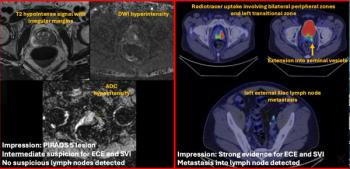
Study Looks at Recall Rates for Digital Breast Tomosynthesis and Digital Mammography
While digital breast tomosynthesis is reportedly more effective at detecting cancer, new research suggests a higher recall rate due to fatigue and less experience in interpreting the images.
What kind of impact do fatigue, and experience level have in the assessment of digital breast tomosynthesis (DBT) images?
Recently published research in Radiology demonstrated that experience matters when it comes to interpreting DBT images as does the time of the day when they are interpreted.
However, they also acknowledged considerably more detail with DBT, noting “hundreds of images per bilateral screening DBT examination, as compared with four images per bilateral screening DM examination.”
“(Due to) the higher number of images to review, DBT may require greater cognitive resources than DM, which could exacerbate the association between fatigue and radiologist performance,” wrote Ana P. Lourenco, M.D., a professor of diagnostic imaging at the Warren Alpert Medical School of Brown University, and colleagues.
The study authors noted that other researchers had found that DBT had an
“Although DBT achieves a superior (true positive) rate, more junior radiologists appeared to compensate for their fatigue later in the day when using DBT by recalling a broader range of mammograms, more of which were (false positive) findings,” wrote Dr. Lourenco and colleagues.
The study authors noted limitations of the study, including a small sample size of radiologists as well as a lack of randomization for the imaging technology, patients, and radiologists. They also acknowledged that using the 5-year mark to distinguish experience is a rough approximation that may not account for work volume or the varied effect of experience for each person.
Newsletter
Stay at the forefront of radiology with the Diagnostic Imaging newsletter, delivering the latest news, clinical insights, and imaging advancements for today’s radiologists.




























